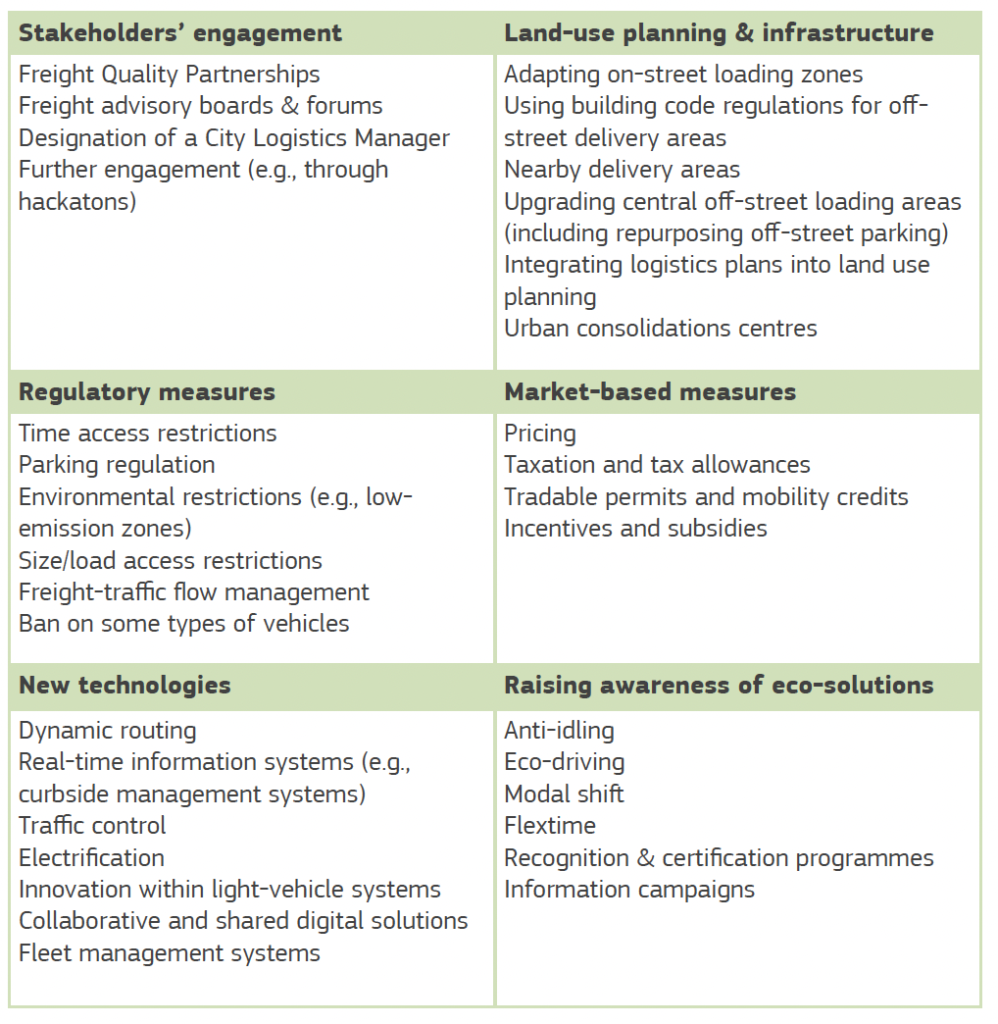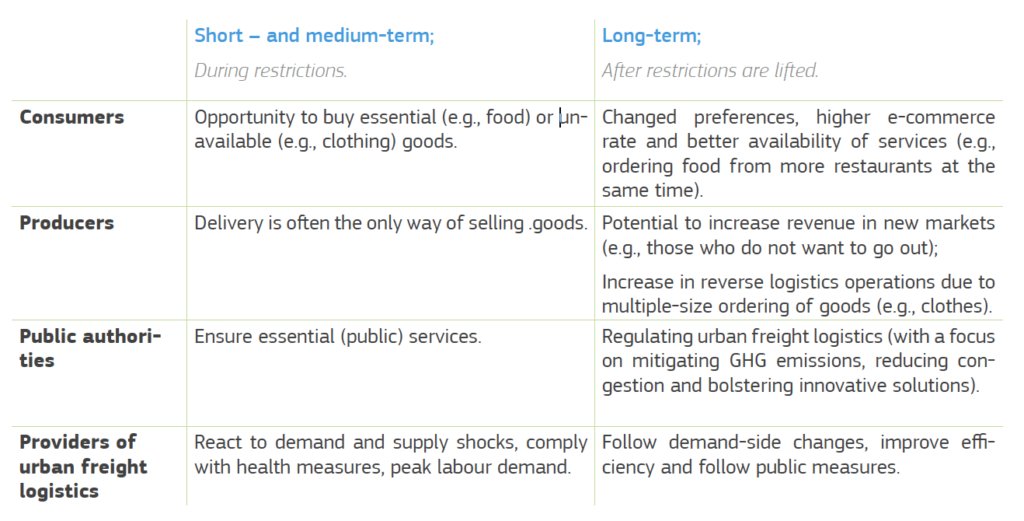The overall goal of urban freight logistics is to provide better and more customized last-time logistic services for citizens, fostering local economic development through local logistics businesses while reducing the negative impact the delivery of goods has on our urban environment.
The European Commission shows a clear interest in sustainable solutions for urban freight logistics, as the White Paper “Zero emission urban logistics in major urban centers by 2030” elaborates. The EIT Urban Mobility wrote the report.
The document aims to present best practice guidelines to improve monitoring and managing urban freight flows. And define a strategy for moving towards’ zero emission urban logistics,’ bringing together aspects of land planning, rail and river access, business practices and information, and charging and vehicle technology standards.

The Urban Freight Logistics system can be broken down into three main components (ways of action) as a basic common taxonomy for any city. The mix of those three components determines logistics operations within the city:
Policy actions. These determine the urban conditions where Urban Freight Logistics operations occur, specifying times, locations, vehicle constraints, etc. This policy level depends on municipal regulations and competencies in most EU cities.
Technical actions. These determine the means to plan trips and communication (e.g., ICT) within Urban Freight Logistics activities and the means to move the freight across the city (e.g., vehicles).
Logistics actions. These determine the operational conditions for urban freight transport (e.g., delivery hours and frequency, means used, exact delivery locations, etc.).
Unfortunately, the document is focused on parcels. This is only 5 to 10 percent of city logistics. In addition, the document does not provide any measures for improving city logistics in food service, construction, or facilitary services. The stakeholder approach could help understand stakeholders’ interests.

Source: Smart Cities Marketplace
